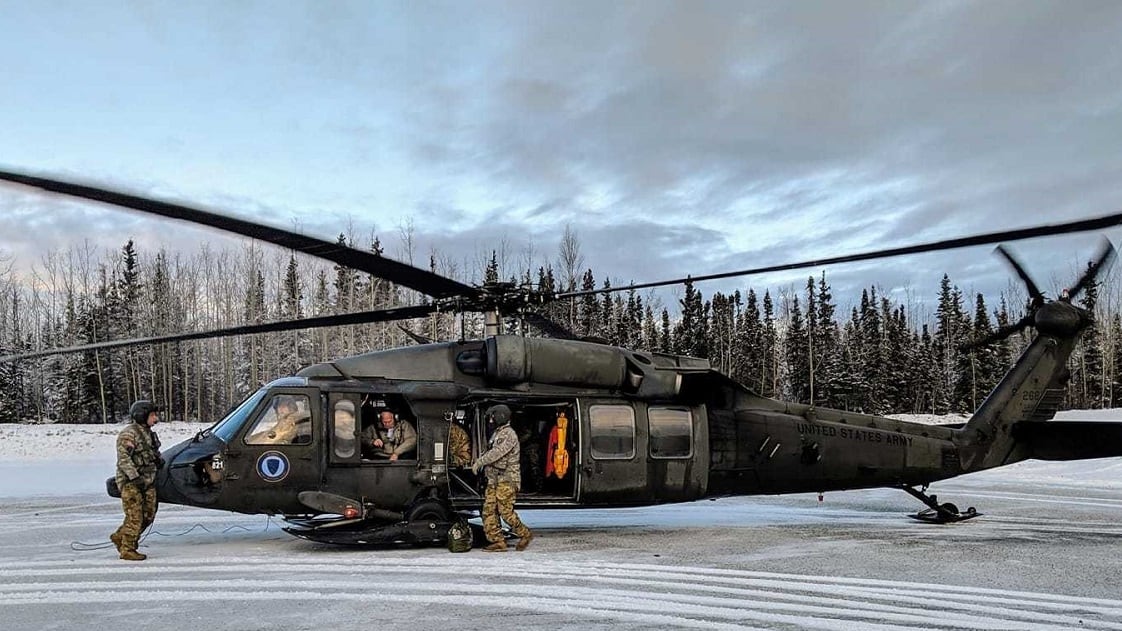WASHINGTON — General Electric Aviation beat the Advanced Turbine Engine Company — a Honeywell and Pratt & Whitney team — to win the $517 million award for the engineering, manufacturing and development phase of the Improved Turbine Engine Program, or ITEP.
“We are honored to be chosen by the Army to continue powering their Black Hawks and Apaches for decades to come,” said Tony Mathis, president and CEO of GE Aviation’s military business. “We’ve invested the resources and infrastructure to execute immediately, and our team is ready to get to work on delivering the improved capabilities of the T901 to the warfighter.”
The fierce competition started more than a decade ago, and its outcome will influence Army rotorcraft for decades to come. GE’s T901 engine is now set to replace the T700 used by the Army’s legacy utility and attack helicopters, but could also potentially outfit the Army’s next generation reconnaissance helicopter in the Future Vertical Lift family of systems.
“The requirements documents for the [Future Attack Reconnaissance Aircraft] specifies the ITEP engine. It has got the FVL stamp of approval,” Jim Thomson, Jr., acting deputy director for the Army’s future vertical lift cross functional team, told Defense News in a recent interview.
ITEP answers a number of problems that emerged as the Army operated Apaches and Black Hawks during combat in Afghanistan and Iraq. The AH-64 and UH-60 became heavier as the service added armor and other upgrades during wartime, and they flew in hotter conditions and higher altitudes than would normally be optimal.
“The helicopters were originally designed to work at 4,000 feet on a 95-degree day, and they were flying them much higher than that,” Mike Sousa, GE’s business development leader for advanced turboshaft engines, told Defense News in December 2018. “When you do that, you just don’t have as much power from the engine.”
RELATED

The Army’s requirements for ITEP were clear throughout the process: Design a 3,000 shaft horsepower engine that reduces fuel consumption by 25 percent and increases its service life by 20 percent compared to the T700, a 2,000 shaft horsepower engine.
Both companies were awarded risk reduction contracts in August 2016, with ATEC getting $154 million and GE Aviation getting $102 million to further refine their designs. Both companies had already spent years conceptualizing new engines and developing novel tech.
GE, the incumbent manufacturer of the T700, offered a single spool engine. Sousa said that configuration would help the company meet weight requirements while removing cost and complexity from the design.
“Our fundamental approach there was how do we keep this engine as affordable as possible and as low weight as possible,” he told Defense News in 2018.
“Helicopters are unique in that they fly into very dirty environments, very austere environments, unprepared landing strips, unprepared surfaces,” added Ron Hutter, GE’s executive director of the T901 program. “They generate a lot of dust. You really want to look at the simplicity of the architecture in terms of maintainability. That’s another aspect that drove us to stick with the single-spool configuration.”
GE estimates that it’s spent $9 billion in testing technologies relevant to the T901.
ATEC had proposed a double spool engine it dubbed the T900.
“We were disappointed to learn that the U.S. Army did not select our offering,” said Craig Madden, president of ATEC. “We believe that we offered the most advanced, capable and lowest risk engine for ITEP for the Army to improve the overall performance of its Apache and Black Hawk fleets.”
Valerie Insinna is Defense News' air warfare reporter. She previously worked the Navy/congressional beats for Defense Daily, which followed almost three years as a staff writer for National Defense Magazine. Prior to that, she worked as an editorial assistant for the Tokyo Shimbun’s Washington bureau.








